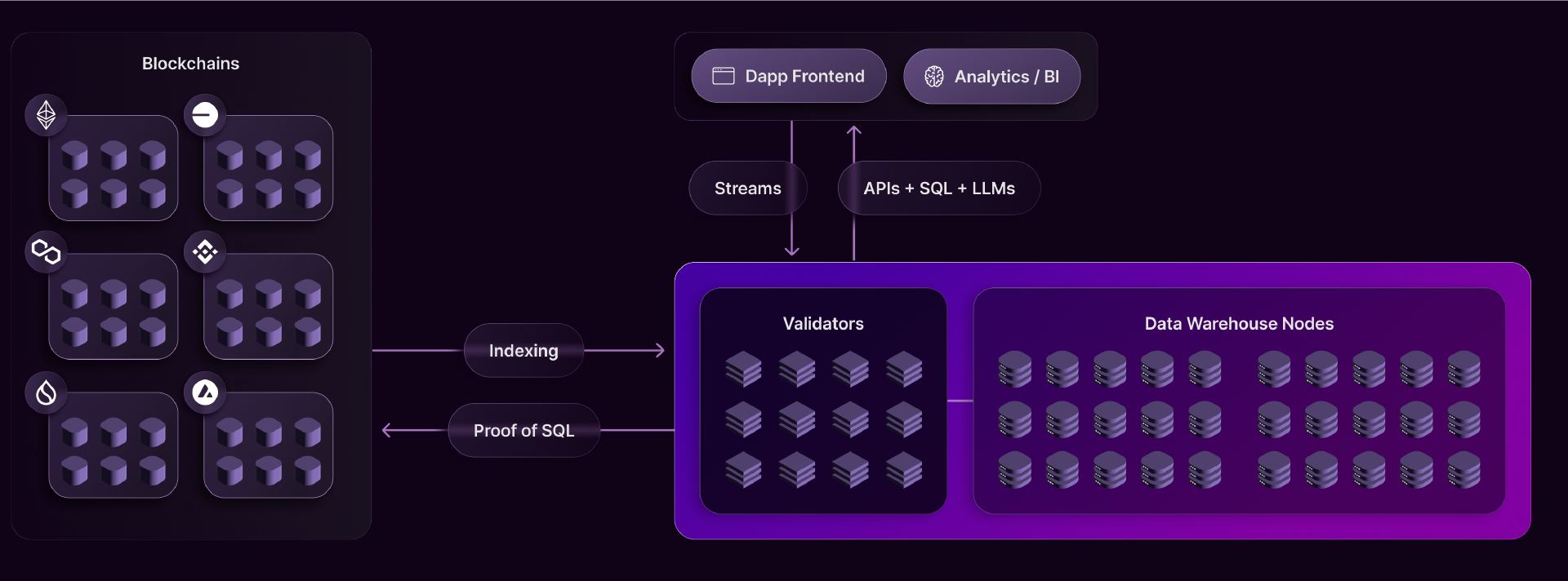Blockchain Indexing

Overview
Because a blockchain is decentralized, blockchain data is distributed across multiple nodes and there is no built-in way to query this data. As a service to our users, Space and Time reads the data on all major blockchains, decodes it, and writes it to relational database tables.
How it works
1. Data generated from the blockchain
Space and Time queries individual blockchain archival nodes with RPC calls. By querying these archival nodes, we can retrieve both realtime and historical blockchain data.
2. Extracting the data from blockchain networks
Space and Time automatically extracts finalized block data from the blockchain networks in three ways:
- Real-time: Polls the realtime block from blockchain nodes.
- Historical: Polls previous blocks as needed to create a complete historical record of blockchain data.
- Decode event data: Coming soon - request decoding from your smart contracts to a new table.
3. Coming to consensus
Consensus is a critical component of the Space and Time platform. The network, formed from BFT consensus services running on each Validator node, will validate and agree on the blockchain data being loaded, thereby eliminating the need for any trusted intermediary.
4. Ingesting data into the data warehouse
Once consensus is achieved, the processed data is inserted into the data warehouse, where it can be easily queried.
Updated over 1 year ago